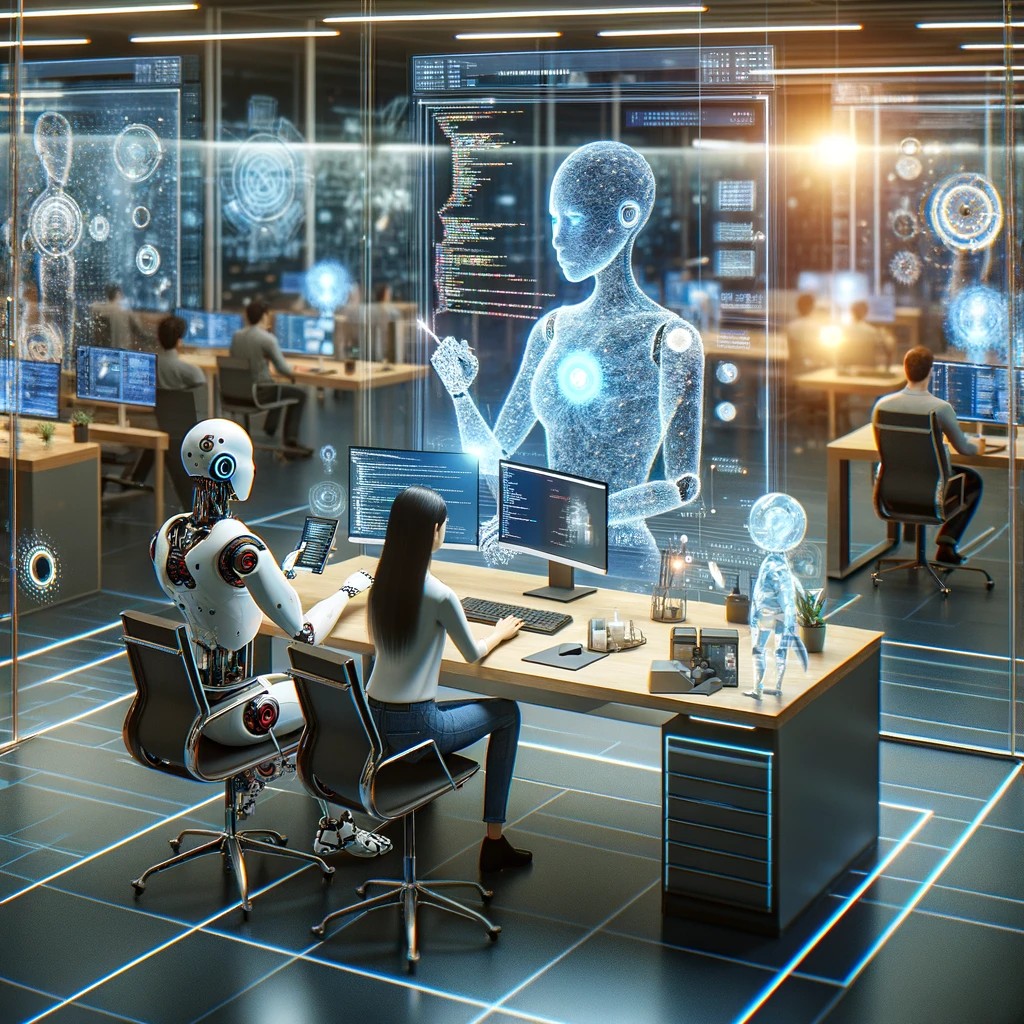Artificial intelligence (AI) is no longer confined to science fiction; it has firmly established itself as an integral part of our daily lives. At the same time, opinions on AI’s implications may vary. One emerging perspective advocates a transformative approach emphasizing collaboration between humans and AI systems.
Art has always been a reflection of human creativity, a testament to our capacity for innovation and expression. With the advent of AI, artists now have a powerful tool at their disposal. Instead of viewing AI as a replacement for human creativity, forward-thinking artists embrace it as a collaborator. AI’s ability to analyze vast datasets, extract patterns, and generate new content opens up new avenues for artistic exploration.
The “Dvorák’s Dreams” project exemplifies human creativity and AI collaboration. Using machine learning, this project breathed new life into the compositions and legacy of the 19th-century composer Antonín Dvorák. The result was not merely a machine-generated “hallucination” but a display of co-evolution. Human intervention guided AI to make a historical, cultural production relevant in the present, uniting tradition with novelty.
Unlocking AI’s potential in finance
Just as in the art world, AI’s influence extends its reach into finance. The success of investment strategies often hinges on identifying genuine innovations while appreciating the lessons of the past. AI’s data-crunching capabilities and human expertise enable more effective investment decisions.
In finance, AI serves as a valuable tool for optimizing technological efficiency and identifying market trends. It can analyze vast datasets to identify investment opportunities and minimize risks. This synergy between human expertise and AI’s analytical power has the potential to revolutionize the financial industry.
Generative AI, a subset of AI, relies on extensive datasets of human expression to create novel content. This approach enables AI to achieve near-universal applicability across various cultural and industrial domains. AI can facilitate innovation and inspire creativity by drawing upon the rich tapestry of human expression.
AI’s ability to synthesize information from diverse sources, whether in classical music or quantitative data, relies on human input to give meaning to its output. This interplay between human and machines is crucial in harnessing AI’s potential for the benefit of society.
The human response determines utility
While AI’s capabilities are undeniably powerful, its utility ultimately depends on the human response to its output. Human decision-making determines how AI is integrated into our lives and the purposes it serves. Whether optimizing efficiency in industrial processes or creating art that resonates with audiences worldwide, AI’s impact is shaped by human intent.
A paradigm shift is needed in light of AI’s transformative potential. Instead of framing the debate as humans versus machines or humans versus humans, a more productive approach is to embrace AI as a collaborator in human progress. Artists, investors, and innovators play a pivotal role in this AI revolution, combining openness to the future with an informed appreciation of the past.
The “Dvorák’s Dreams” project is a compelling proof of concept for this collaborative approach. It highlights the synergy between human creativity and AI’s analytical prowess, emphasizing that AI can enhance human endeavors rather than replace them. This collective mindset can extend to various domains, paving the way for a harmonious coexistence between humans and AI technologies.
From Zero to Web3 Pro: Your 90-Day Career Launch Plan
